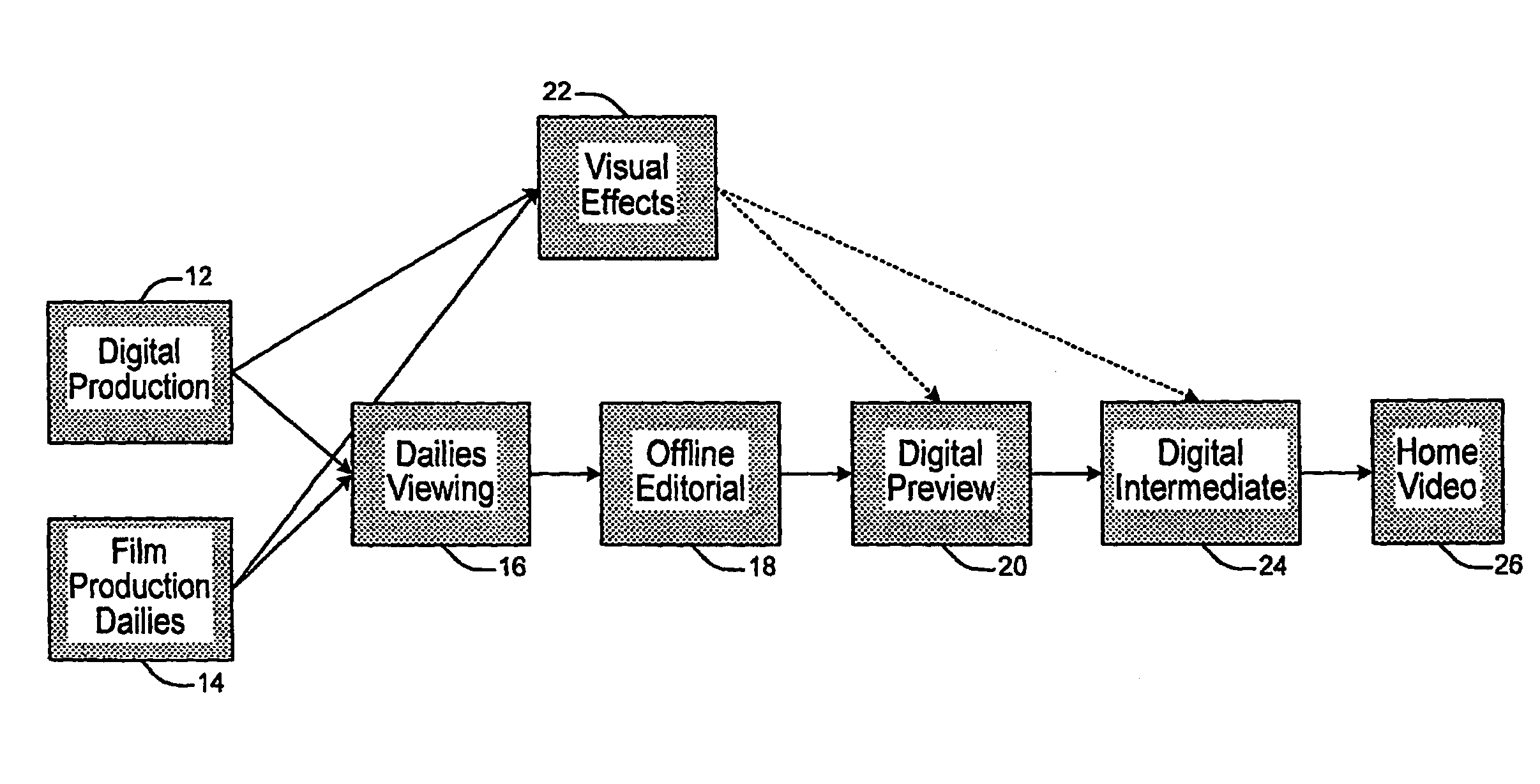Continuous color grading technique
a color grading and color technology, applied in the field of continuous color grading technique, can solve problems such as the inability to provide a consistent frame of referen
- Summary
- Abstract
- Description
- Claims
- Application Information
AI Technical Summary
Benefits of technology
Problems solved by technology
Method used
Image
Examples
Embodiment Construction
[0018]FIG. 1 depicts the elements in a workflow 10 associated with the production of an audio-visual work in accordance with a preferred embodiment of the present principles. Illustratively in FIG. 1, the audio-visual program takes the form of a pre-recorded digital versatile disc (DVD), some times referred to as a digital video disk, containing at least one feature presentation such as a movie or television show. Alternatively, or in addition to the pre-recorded DVD, the audio-visual program could take the form of a movie in either digital or analog form for theatrical presentation.
[0019]The workflow 10 commences with content creation (e.g., image capture) by making use of one or more digital image capture devices (e.g., Thomson Grass Valley Viper film stream cameras) during digital production in step 12. Image capture also can occur during by making use of one or more film cameras during film production in step 14. (Indeed both digital production and film production could occur in...
PUM
 Login to View More
Login to View More Abstract
Description
Claims
Application Information
 Login to View More
Login to View More - R&D
- Intellectual Property
- Life Sciences
- Materials
- Tech Scout
- Unparalleled Data Quality
- Higher Quality Content
- 60% Fewer Hallucinations
Browse by: Latest US Patents, China's latest patents, Technical Efficacy Thesaurus, Application Domain, Technology Topic, Popular Technical Reports.
© 2025 PatSnap. All rights reserved.Legal|Privacy policy|Modern Slavery Act Transparency Statement|Sitemap|About US| Contact US: help@patsnap.com



